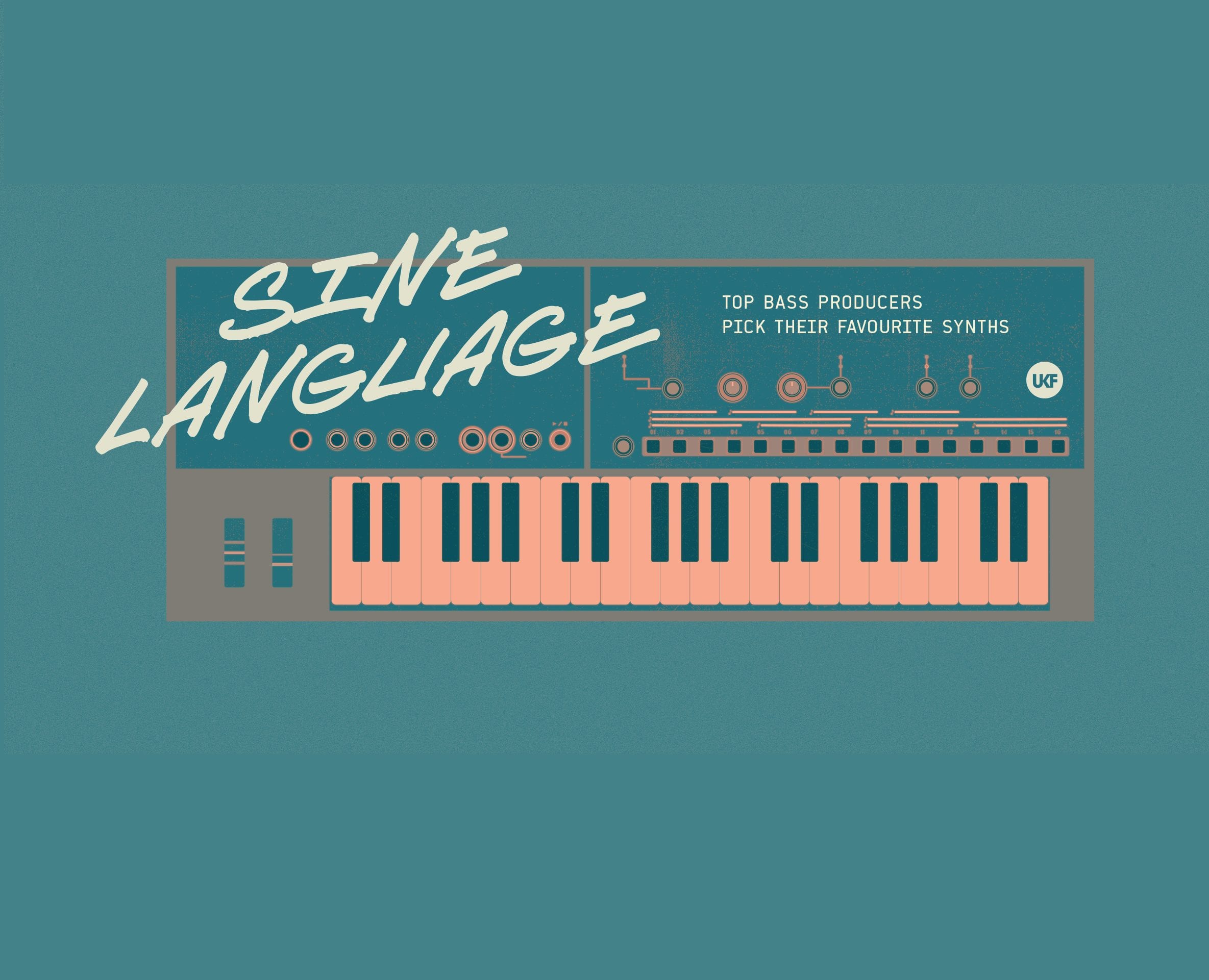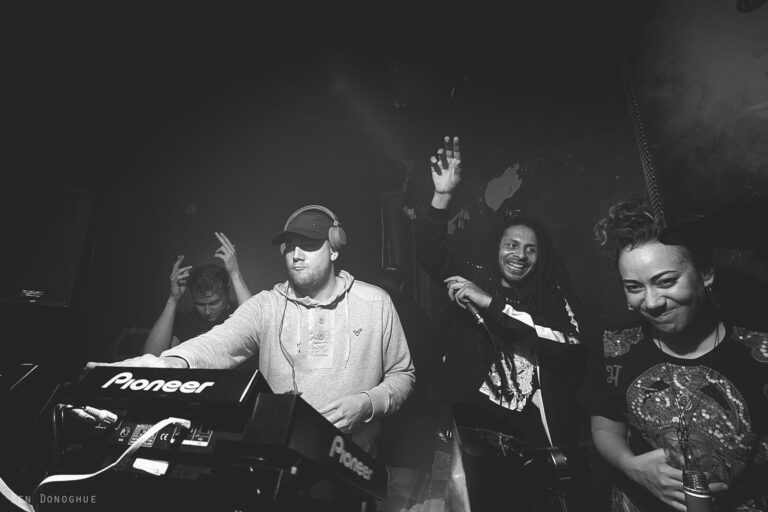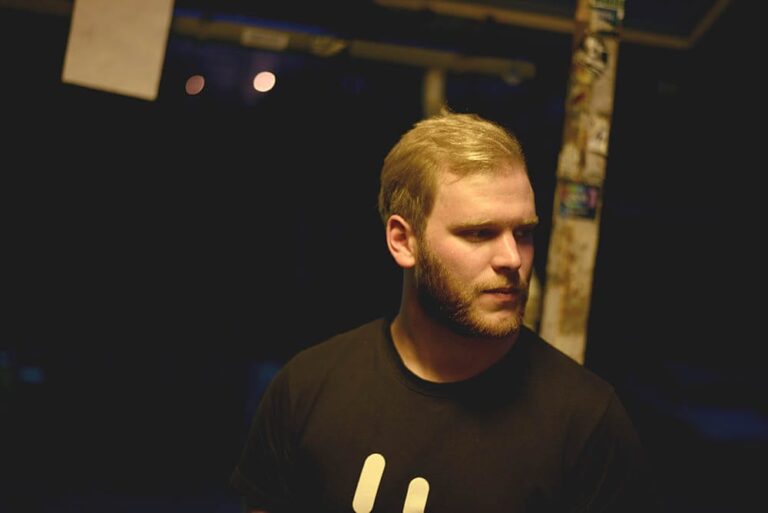May 23: International Synth Day
It’s a thing. And we’re glad it is. An annual event held Bob Moog’s birthday, it’s now in its second year and it’s a great reason to pay homage to the most vital tools in our music.
To celebrate we’ve asked some of our favourite technical, musical and creative minds in the game for their favourite synth: Rusko, Sub Focus, Hazard, Virtual Riot, Icicle, Billain, A.M.C, Turno, Current Value, Myro and Broken Note. For these guys it’s a happy international synth day all day, every day.
From the OG wub generator Rusko used on every tune until 2011 to a mad 70s synth in a briefcase that gave us the Dr Who Theme and Hazard’s Air Guitar, here are 11 game-changing synths and a stack of synth facts. Be there, don’t be square…
A.M.C
Synth: Serum
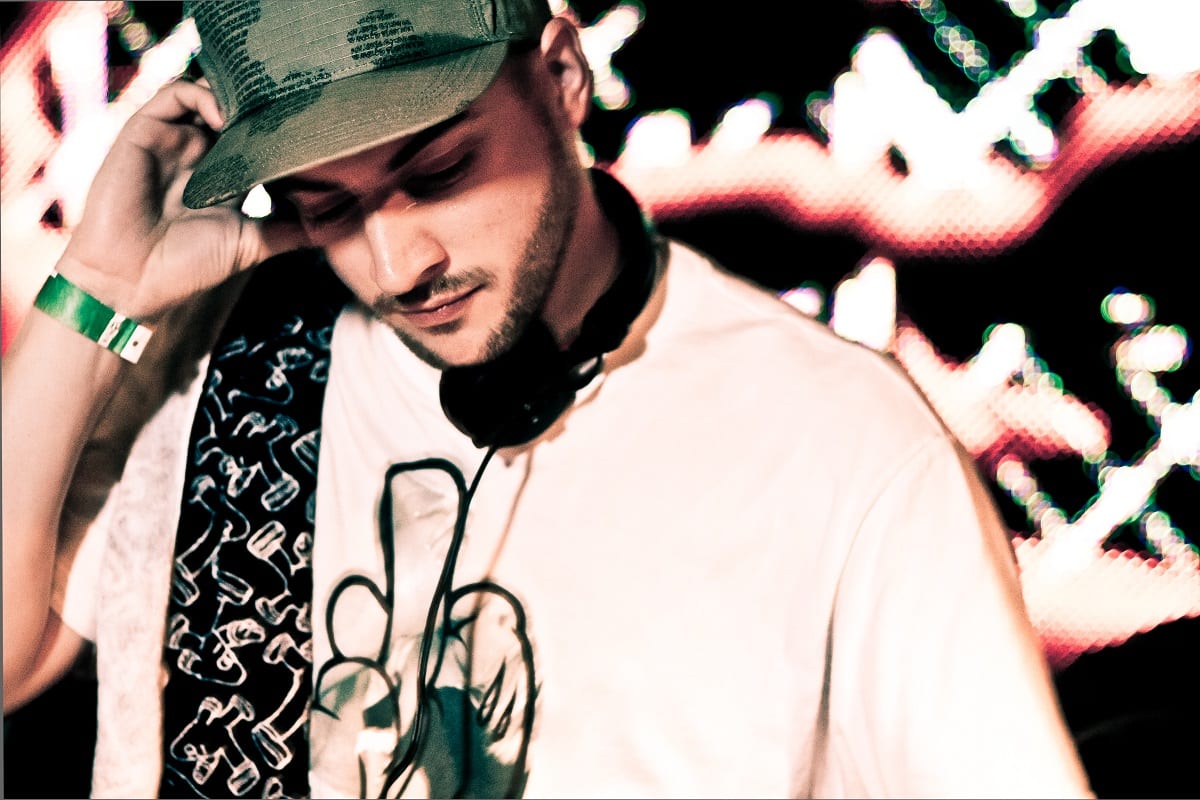
“Everyone will probably pick a particular piece of hardware but I’m going to go with something a little more obvious and also a soft synth. Serum has been my go-to tool basically since the day it was released. I use it so much I really think I have a full understanding of how it works and how to achieve certain sounds I’m looking for.
“Serum is so versatile in the way it works. There was a worry that sooner or later it will get rinsed and become like Massive has (where everyone knows a sound that’s has been made in that soft synth) but thanks to the ability to integrate your own wave tables I don’t think this will happen. Plus it sounds great and I could sit here and talk about so many aspects of it I enjoy but I’ll keep it short with one by saying this: the built in multi band compressor is fucking mind blowing.
“You can hear Serum in pretty much all of my tracks but, to be honest, sometimes I try not to open it immediately as other hardware, software etc can open up your mind in terms of creativity.” – A.M.C
Billain
Synth: Juno 106

“The Juno 106 has been praised by people like Vangelis, Depeche Mode, Faithless, Chemical Brothers, Autechre to name a few. I think these names are enough to pinpoint this dystopian, almost rebellious attitude they all share in their directions.
“Years have passed for this synth. But that’s what is magical about it; the purity of voltage imperfection from the times where no producer would dare to question idea over production. It sounds old and broken, retired, scavenged and saved. Then turned on to talk about the ancient times. We forgot the ancient times, we have experts who tell us how it sounds through new emulations, but my room temperature brings a different sound to it every time.
“Of course we had production standards then as well, but we weren’t obsessed with killing a soul in the track with surgical silence in sample rates and making it sound like marble surface, a monotony. It’s like an era of realism art movement gone too real. It is surreal how much dirt has been stigmatized in the modern music. What I try to explain to ‘cleanists’ is that I’m trying to create dystopian drum & bass, and not Apple D&B products. I guess the dirty movement finally got a bit saved by the lo-fi movement and I intend to preserve dirty production in my style of D&B further. To get back to the discussion, the 106 and its family of tape recorders are my companions to do just that.” – Billain
Broken Note
Synth: Operator

“We don’t really have a favourite synth as almost of them have their own unique qualities to them once you figure out what they can do. Some of our favourites are the Virus, Serum and Operator. All of them can all be used to create mids, basses, pads, kicks, snare, strings…. You can basically make anything with synthesis if you go deep enough.
“For us Operator has become a popular tool. Integrated in Ableton Live since around 2005, it’s been around for a while, but we’ve only been experimenting with it around five years ago. A hybrid FM synth with subtractive and additive synthesis possibilities, it’s great because simplicity sometimes is all you need to create something that’s complex. And although it’s quite simple, your sonic palette isn’t at all limited because you can stack as many as you like!
“Operator and can be heard on some of our forthcoming records, but for our most used hardware synth it has to be the Virus TI. Almost every track on our first album Terminal Static has some Virus on it in varying amounts. The 15 year old Virus we have is the first addition of the TI and was second hand when we got it. There’s a lot of software synths that can compare sonically these days but the Virus still holds its own for the imperfect digital sonics it can produce. As much as we love Operator, the Virus was a breakthrough machine when it was released. It was the first synth to have a hypersaw wavetable and opened up a whole load of new possibilities sonically. It was one of the original synth foundations of drum & bass and bass music.” – Broken Note
Current Value
Synth: Nord Modular series

“As the name says, these are modular synths and they‘re a wonderful tool to create any sound you can think from scratch. They have a great sound character and offer enough to even create whole tunes and play them in real time! I had my first 15 years ago, being modular virtual analogue it works with an editor to create your sounds with module groups that you can combine whichever way you like. I don’t know if the Nord Modular line-up is too “far out” to have been commonly used in classic records from back in the days, but you can hear a lot of it my Back To The Machine album from 2010 and a lot of the Machine Code tracks I make with Dean Rodell.” – Current Value
Hazard
Synth: EMS Synthi AKS

“You might recognise this from the Doctor Who theme. The Synthi is a legendary synth that comes in its own briefcase. Originally people said it was rubbish and the sound quality was crap but it’s now a collector’s item and regarded as cult synth.
“I actually had one, I paid £5500 for it, but I needed some money and sold it thinking I’d be able to buy another one soon after. Turns out I was wrong; I can’t even find one and when you do they’re much closer to £10,000 now. They’re not great synths by any means, functionally compared to modern synths, but the sound I got out of it with minimal effort made it the one. You’d root things by putting pins in this grid. Say, an oscillator to an envelop, then the envelop to a reverb and then to the output. It was complicated as hell and hard to get your head around but once you did you could make some really raw sounds. I made Air Guitar bass with that. I played it live and used the joystick for the LFO and pitch. All in one take with hardly any processing. That was the sound that came out of it and had such character. They’re hard to find now and there’s a lot of scams out there because they’re so sought after but I know I’ll find another one some day.” – DJ Hazard
Icicle
Synth: Virus TI

“Out of the synths I’ve owned I’d say the sh-101 has had the coolness factor, but really my fave synth has to be the Virus. I’ve had a B and a Snow, which I still use a lot today. First launched in 1997, the Virus is one of the most versatile out of the box synths ever made, and it’s so characteristic for anything from rave to modern drum & bass. Famous for its heavily modulated hard and cutting sound – which you can hear in tonnes of seminal records especially late 90s-era drum & bass such as Ed Rush & Optical and Bad Company – it does distorted bass like no other.
“Technically speaking it’s a 3 oscillator analog-modelling synth with dual filters and loads of mod parameters and comprehensive FX section. I’ve used it for a lot of my bassline sounds, I especially like doing minutes-long extended bass sounds where I modulate all sorts of parameters and then resample and go looking for the most expressive little sections. The Snow has been a staple of my live show… There’s nothing like playing a bass live from the virus directly into a soundsystem!” – Icicle
Myro
Synth: Massive
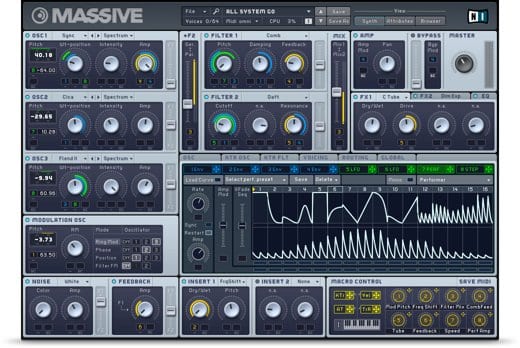
“Every single Astronaut and Myro tune I’ve made in the last 10 years have all had Massive at the core. I think the best thing about this soft synth is the way everything is routed to each other. It was so ahead of its time when it first appeared on the scene that it stayed the number one used synth in bass music for years and years… until Serum came a long and knocked it off the top spot.
“It took a while for Massive to be pulled down from the throne though! In the early days, it seemed like the most complex sound that someone was able to get out of massive was the famous Sub Focus bass using the LFO performer. I remember watching his Computer Music tutorial on how that sound was made and being blown away. That sound was so copies it became a meme in itself.
“I think Massive peaked when Knife Party started though. Rob Swire seemed to squeeze every possible growl sound out of Massive which started the Youtube tutorial craze as people started to figure out how Rob did it. Then the sound of Massive became stale, making it the perfect time for Serum to pop up in its place.” – Myro
Rusko
Synth: Albino 3

“Back in the very early days, around 2005 when I was first starting out, Skream told me about Rob Papen’s Albino 2 and how it made the most insane bass sounds. A couple of years later version three came out and it was even more incredible. It has a big red edit window where you could easily route any one part to another (especially the LFO) At the time a lot of synths could do this but not so simply right there on the front page. Also, the waves used have a kind of spectral sound to them. Super digital and plastic-y. It literally is the sound of early wobbly dubstep and there hasn’t been anything that sounds so unique since. You can hear it on Skream’s Midnight Request Line, Coki & Benga’s Night, and every single tune I made from 2005 – 2011 (when I deleted it because I used it too much)” – Rusko
Sub Focus
Synth: Yamaha CS-80
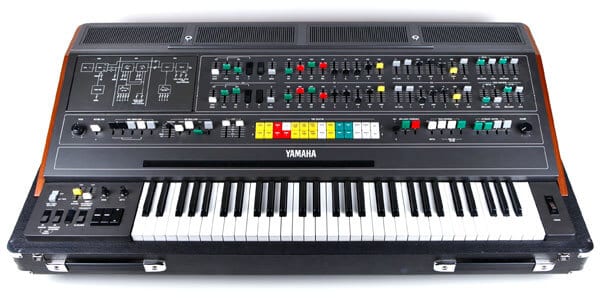
“Released in 1976, the Yamaha CS-80 gained notoriety being responsible for many of the iconic sounds of the original Bladerunner Soundtrack by Vangelis. You can hear these amazing sweeping lead sounds all over the soundtrack coming from it. It has a thick, brassy, phasey character that is very distinctive with a huge ribbon controller just above the keyboard that can be used for the pitchbendy sounds it became known for.
“Hearing all these amazing synth-led soundtracks when I was a kid really primed my interest in synths before I had properly heard dance music for the first time. That soundtrack has been sampled numerous times in D&B: Dillinja’s Angel’s Fell being a classic example.
“Sadly I’ve never been able to own one, they are extremely rare and cost £10,000 and upwards these days if you are lucky enough to find one in good working order. I have had a decent go with one however as the guys from Nero managed to find one a few years ago which lived in the studio next door to me! I remember A-B-ing with plugin versions and the real thing. Nothing came close apart from a little-known plugin by Memory Moon called ME-80, so that’s well worth tracking down if you want to emulate its sound on a more modest budget. There’s a new hardware clone of the synth being made now called Deckard’s Dream – a reference to Harrison Ford’s character in the Blade Runner Film – I’m looking forward to checking it.” – Sub Focus
Turno
Synth: Native Instruments Kontakt
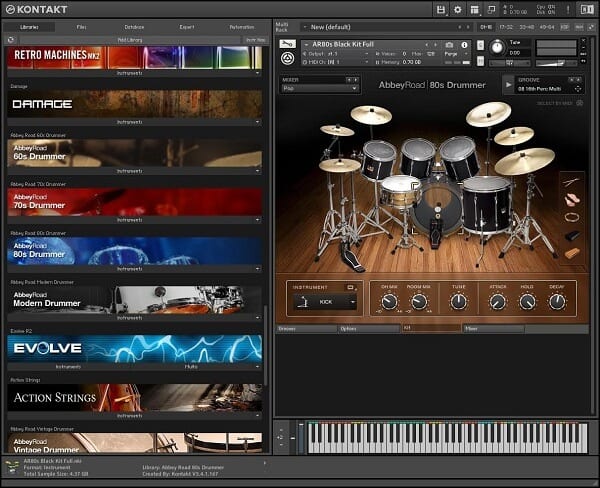
“Okay it’s not technically a “synth” (cue the synth geeks) But it has most of the capabilities of one and then some. It’s labelled as a sampler but it’s actually a monster and it’s my go-to tool in pretty much all of my tracks.
“It’s the industry standard sampler. I see it used vastly among all genres of music and it also has a massive array of external libraries which host an amazing scope of sounds. Anything from symphony orchestras to ethnic instruments , drum banks, bass modules. I could go on.
“This is why it’s my choice; the sound quality is unbeatable and, because I resample a lot, it has all the right features to be able to transform, modulate, process, loop, slice reverse and timestretch and the modulation options are endless. They also recently introduced a new synth called Form with the addition of additive synthesis among other mangling features.
“I love the journey you can take a sound on with Kontakt. I’m a big fan of creative techniques, crazy chains of effects modulating things which shouldn’t be. Basically throwing the book out the window and Kontakt allows me to do that!” – Turno
Virtual Riot
Synth: Yamaha DX7
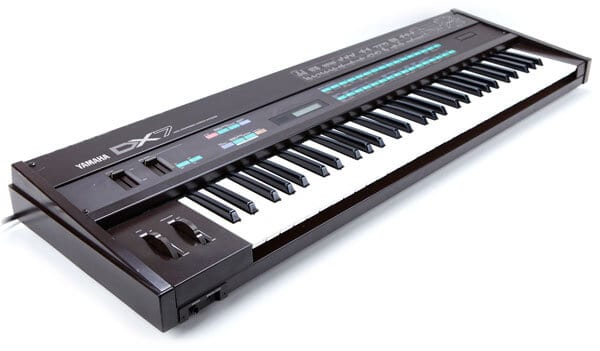
“Easily spotted in songs like Europe – The Final Countdown, where it is responsible for the main lead sound, or in A-Ha – Take On Me, where it was used to imitate a slap-bass; the Yamaha DX7 is an FM-based synthesizer from 1983, it was the first commercial digital synth and is responsible for most of the glossy sparkly synth sounds of the 80s.
“Unlike classic analog synthesizers, it works by frequency modulating up to six oscillators with each other, creating a very glossy and digital sound. Ableton’s Operator works in a very similar way with four oscillators and Native Instruments’ FM8 is also designed after the DX7.
“What sets it apart from classical analog subtractive and additive synthesis is that frequency modulation allows you to create much more complex waveforms and have them change in timbre over time in a way similar to the sound of real instruments. So naturally the DX7 has many presets that imitate real life instruments without the use of samples.
“Technically I have never used a real DX7 or a DX7 clone in a song. But there is a classic way of making a growl bass with FM synthesis in FM8 or Sytrus, so technically every other dubstep sound uses frequency modulation that was first introduced with the DX7. Arturia just recently released an amazing DX7 VST Instrument in their latest V collection, I’ve been playing around with it a lot and it has some amazing presets, even some original ones from the old hardware ROM so who knows? Maybe you’ll hear some classic DX7 sounds in my next songs.” – Virtual Riot
Juno The Score: 10 synth facts
The first ever electric keyboard was called Denis. Seriously. The Denis d’or was invented in the 1740s by Czech theologian Vaclav Prokop Divis and it incorporated a clavichord style string and keyboard instrument and electricity. Only one was ever built and there’s very little record of its use or success (there are theories that it was used to comically give the player shocks through the keys) and it wasn’t a synth by any stretch of the imagination. But it had a keyboard and used electricity so this marks the start of electronic musical instruments in their crudest form.
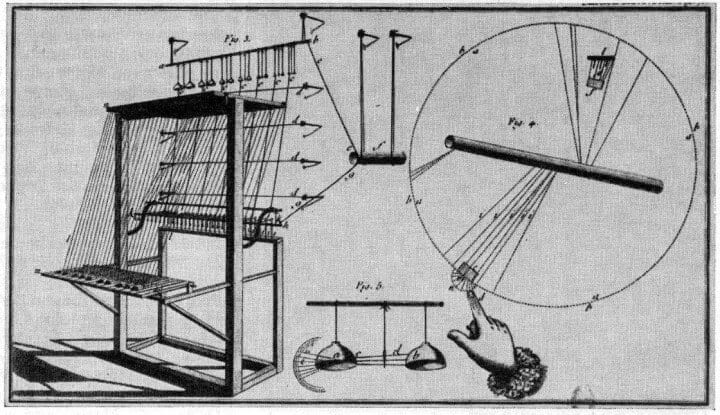
Got a spare $150,000? Then why not invest it in the Emerson Moog Modular System. The most expensive synth in the world, the EMMS is a faithful recreation of Keith Emerson’s unique modular set-up and a one-off result of three years of research and handcrafted building. Each module has been recreated by hand with the same components and materials used when the Moog and the famed composer/inventor developed it during the 1970s. Not just the most expensive but also the most powerful synth in the world. Check the insane lengths they went to in order to build it…
If the Emerson looks a little too big for your studio then check the Trueno – the world’s smallest analog synthesizer. A small USB stick with all the analog circuitry inside, it packs three oscillators, plugs straight into your Mac or PC and is controlled via a plug-in style interface. Simple, effective, tiny. It makes some pretty mean sounds, too. Size isn’t everything.
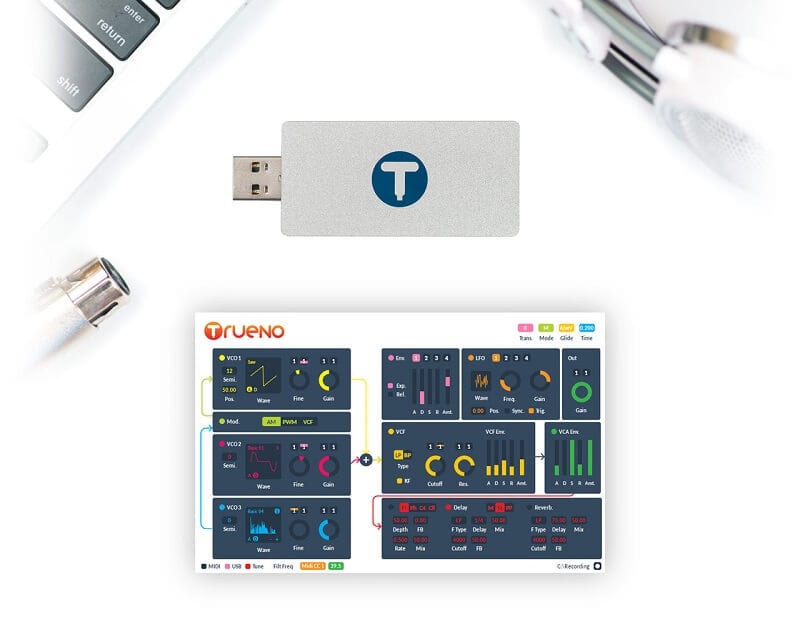
But if it is size you’re after then you need to speak to sound artist Ryoji Ikeda who created the world’s largest synth orchestra… Using 100 cars. Each car was rigged up with a portable synth and programmed to play the note A at different frequencies. The composition – entitled A [For 100 Cars] was performed by the impressive fleet on a parking lot rooftop in LA last October for Red Bull Music Academy. It sounds and likes a bit like this…
Keeping with size, you can also turn an old first gen Gameboy into an 8-bit mono synth for the princely sum of $70. The Nanoloop Mono cart uses a hybrid sound chip which creates a random tone that you can then process through three analog filters and the analog components of the Game Boy itself. Complete with a step sequencer and a USB MIDI adaptor for full sync capabilities, it can make some pretty cool sounds…
Haven’t got an ancient Gameboy? Then use your voice with Soma Laboratories’ recently launched PIPE. It looks like the gnarliest vape a bro could put their lips to, but is actually a powerful box of effects and synth trickery that turns your breath and mouth noises into sounds via eight algorithms.Check out this trippy demo video, you won’t be disappointed….
The 303 was originally a flop! One of the most iconic electronic music synths of all time, Roland’s Transistor Bass model 303 was actually designed and marketed as a virtual bassist and solo artists looking for accompaniment on a budget. It wasn’t until Chicago don DJ Pierre unlocked its secrets (along with fellow Phuture cohorts DJ Spanky and Herb J) in 1987 that the signature, timeless wet acidic rasps that have characterised millions of tracks over the last 21 years.
Another cool Roland story involves the man like Hans Zimmer. He has one of the largest System 100 racks in his studio which takes up an entire wall from floor to ceiling and would be worth hundreds of thousands if you add the value of each rare module. He didn’t pay that, though. He bought it in the 80s when digital synthesis came in and Roland couldn’t shift the kit for love nor money. They sold a job lot for $25 per kilo! It’s one of many awesome facts in this fascinating video interview. Zimmer you massive G.
Here’s a synth module that will shift… Years off your life! Electronic art and sonic inventor David Cranmer has invented a module that works off a Geiger counter that reacts to a small pot of uranium ore to create voltages. We wouldn’t advise you to try this at home, but we would recommend checking his site. Man’s a maverick.
Finally, if you’re simply looking for a genuinely dirty sound then we have the solution: The Earth Return Distortion module. Designed by renowned module inventor Martin Howse, the ERD sends sounds through a box of earth to create natural distortion and texture. It looks and sounds a little like this…. Time to get grimy!
